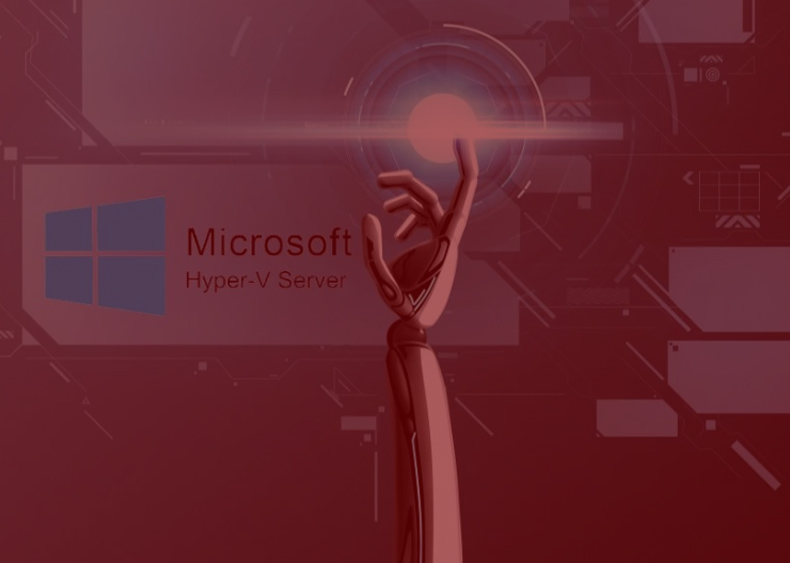Virtualization and Cloud
Virtualization
Virtualization is a fundamental computing technology that involves the abstraction of physical resources, such as servers, storage devices, or network infrastructure, to create virtual instances of these resources. This process enables the efficient utilization of hardware by allowing multiple virtual environments to operate on a single physical machine or infrastructure.

Types:
Various forms of virtualization exist, including server virtualization, which enables multiple virtual servers to run on a single physical server, and desktop virtualization, which allows virtual desktops to run on centralized servers or cloud infrastructure.
Benefits:
Virtualization offers several advantages, including enhanced resource allocation, improved resource utilization, cost reduction through server consolidation, and increased flexibility in managing and provisioning IT resources. Additionally, it facilitates disaster recovery and business continuity efforts.

Cloud Computing
Cloud computing is a transformative technology paradigm that provides on-demand access to a wide array of computing resources and services over the internet. These services encompass infrastructure, platforms, and software, and are typically delivered on a pay-as-you-go basis.
Service Models:
Cloud computing operates via service models that include Infrastructure as a Service (IaaS), which provides virtualized infrastructure components; Platform as a Service (PaaS), which offers a development platform for applications; and Software as a Service (SaaS), which delivers fully-fledged software applications.
Deployment Models:
Cloud computing can be deployed in various configurations, such as public cloud (utilizing shared infrastructure provided by a third-party cloud service provider), private cloud (dedicated infrastructure for a single organization), hybrid cloud (a blend of public and private resources), and multi-cloud (using multiple cloud providers simultaneously).
Benefits:
Virtualization serves as a foundational technology within cloud computing environments. It enables cloud providers to optimize resource utilization and efficiently manage their physical infrastructure by creating and managing virtual instances of resources. Consequently, cloud computing extends the principles of virtualization to deliver a broader range of services and resources via the internet.
Relationship:
Cloud computing delivers numerous advantages, such as scalability to accommodate changing workloads, cost efficiency by eliminating the need for on-premises hardware, accessibility from anywhere with an internet connection, and rapid deployment and scaling of resources. It simplifies IT management and enhances agility in responding to business needs.
In summary, virtualization is the process of abstracting physical resources into virtual instances, while cloud computing encompasses the delivery of a comprehensive suite of computing services and resources over the internet. Virtualization forms the basis of cloud computing, enabling the efficient use of physical infrastructure within cloud environments, and together, they have revolutionized IT operations and resource provisioning.
VMware Solution
We offer a range of integration solutions and products that enable organizations to integrate, manage, and optimize their IT infrastructure, applications, and data. These solutions are designed to work seamlessly with VMware's virtualization and cloud technologies.
Here are some key VMware integration solutions and products:

- VMware vCenter Server: This is a central management solution for VMware vSphere environments. It provides a unified platform for managing virtualized data centers, including virtual machines (VMs), networking, and storage.
- VMware NSX: NSX is VMware's network virtualization and security platform. It allows organizations to create and manage virtual networks, making it easier to integrate and automate network services and security policies.
- VMware vRealize Suite: vRealize is a comprehensive cloud management platform that includes tools for cloud automation, operations management, and orchestration. It helps organizations optimize their infrastructure, automate tasks, and improve service delivery.
- VMware Cloud Director: This solution is designed for service providers and enables multi-tenant cloud management. It allows service providers to offer cloud services to their customers while maintaining security and compliance.
- VMware Workspace ONE: Workspace ONE is an integrated digital workspace platform that combines mobile device management (MDM), identity management, and application management. It provides a unified experience for end-users and IT administrators.
- VMware Cloud Automation Services: These services help organizations automate the deployment and management of infrastructure and applications across multi-cloud environments. They include Cloud Assembly, Service Broker, and Code Stream.
- VMware Tanzu: Tanzu is a suite of products and services for container management and Kubernetes orchestration. It helps organizations build, run, and manage containerized applications.
- VMware CloudHealth: CloudHealth is a cloud cost management and optimization platform that helps organizations monitor and optimize their cloud spending across multiple cloud providers.
- VMware Site Recovery Manager (SRM): SRM is a disaster recovery solution that automates the failover and failback of VMs in the event of a disaster. It ensures data and application availability across sites.
- VMware vSphere Integrated Containers (VIC): VIC allows organizations to run containerized applications alongside traditional VM-based applications on the vSphere platform.
- VMware Integrated OpenStack (VIO): VIO enables organizations to deploy and manage OpenStack-based private clouds on top of VMware infrastructure.
- VMware SD-WAN by VeloCloud: This SD-WAN solution provides secure and optimized connectivity for branch offices and remote sites. It integrates with existing VMware infrastructure for centralized management.
- VMware Carbon Black: Carbon Black is a security platform that integrates with VMware solutions to provide endpoint security, threat detection, and response capabilities.
These VMware integration solutions and products are designed to enhance the efficiency, agility, and security of IT environments. Organizations can choose the ones that best align with their specific needs and objectives to create a more integrated and responsive IT infrastructure.

Microsoft Hyper-V
Microsoft Hyper-V is a virtualization platform that enables organizations to create and manage virtual machines (VMs) on Windows Server or Windows 10/11 host systems. It provides a scalable and cost-effective solution for virtualization, allowing businesses to consolidate their IT infrastructure, enhance flexibility, and improve resource utilization.
Here's an overview of Hyper-V and its key features:
-
Hypervisor Virtualization:
- Hyper-V is a Type 1 hypervisor, which means it runs directly on the physical hardware, allowing for efficient VM management and performance.
-
Virtual Machine Creation and Management:
- Users can create and manage multiple VMs on a single physical host, each with its own operating system and applications.
- Hyper-V Manager and PowerShell provide tools for VM creation, configuration, and monitoring.
-
Live Migration:
- Hyper-V supports live migration, allowing VMs to be moved between hosts with minimal downtime. This is crucial for load balancing and maintenance.
-
Checkpoints:
- Checkpoints (formerly snapshots) enable users to capture the state of a VM at a specific point in time. This is useful for testing and backup purposes.
-
Dynamic Memory:
- Hyper-V can dynamically allocate memory to VMs based on workload demands, optimizing resource utilization.
-
Integration Services:
- Integration services enhance VM performance by providing drivers and services for better interaction with the host system.
-
Hyper-V Replica:
- This feature offers asynchronous replication of VMs to a secondary site for disaster recovery purposes.
-
Hyper-V Containers:
- Hyper-V Containers provide lightweight, isolated application containers that share the host OS kernel.
-
Nested Virtualization:
- Hyper-V supports nested virtualization, allowing users to run Hyper-V within a VM. This is valuable for testing and development scenarios.
-
Shielded VMs:
- Shielded VMs offer enhanced security for VMs by protecting them from unauthorized access and tampering.
-
Management Tools:
- Hyper-V can be managed using Hyper-V Manager, PowerShell, and System Center Virtual Machine Manager (SCVMM) for more extensive management capabilities.
-
Hyper-Converged Infrastructure:
- Microsoft offers Hyper-Converged Infrastructure (HCI) solutions that combine Hyper-V with software-defined storage and networking for streamlined data center management.
-
Licensing:
- Hyper-V is included as a role in Windows Server, making it a cost-effective virtualization solution for organizations already using Windows Server.
Microsoft Hyper-V is suitable for a wide range of use cases, from small businesses looking to consolidate servers to larger enterprises implementing virtualization at scale. It's important to choose the appropriate edition of Windows Server or Windows 10/11 based on your specific requirements and licensing considerations.
Microsoft Azure and Amazon Web Services
Both Microsoft Azure and Amazon Web Services (AWS) are leading cloud computing platforms that we offer a wide range of solutions and services to organizations for building, deploying, and managing applications and infrastructure in the cloud.
Here is an overview of the solutions and services offered by each cloud provider:

Microsoft Azure Solutions and Services:
-
Compute Services:
- Virtual Machines (VMs): Azure provides scalable VMs for various operating systems.
- Azure Kubernetes Service (AKS): Managed Kubernetes service for container orchestration.
- Azure Functions: Serverless compute platform for event-driven applications.
-
Storage Services:
- Azure Blob Storage: Object storage for unstructured data.
- Azure SQL Database: Managed relational database service.
- Azure Cosmos DB: Globally distributed NoSQL database.
-
Networking:
- Azure Virtual Network: Isolated network environments.
- Azure Load Balancer: Distributes incoming traffic across VMs.
- Azure VPN Gateway: Secure network connectivity to on-premises data centers.
-
Identity and Access Management:
- Azure Active Directory (Azure AD): Identity and access management services.
- Azure Multi-Factor Authentication (MFA): Enhanced security with multi-factor authentication.
-
Developer Tools:
- Azure DevOps: Tools for agile development and DevOps practices.
- Azure Logic Apps: Workflow automation and integration platform.
-
AI and Machine Learning:
- Azure Machine Learning: Tools for building, training, and deploying machine learning models.
- Azure Cognitive Services: Pre-built AI capabilities like speech and image recognition.
-
IoT and Edge Computing:
- Azure IoT Hub: Managed IoT service for device connectivity and monitoring.
- Azure IoT Edge: Extends Azure IoT capabilities to edge devices.
-
Security and Compliance:
- Azure Security Center: Threat protection and security management.
- Azure Policy: Policy-based management and compliance.
Amazon Web Services (AWS) Solutions and Services:
-
Compute Services:
- Amazon EC2: Scalable VMs.
- Amazon ECS: Container orchestration service.
- AWS Lambda: Serverless compute service.
-
Storage Services:
- Amazon S3: Object storage.
- Amazon RDS: Managed relational database service.
- Amazon DynamoDB: NoSQL database.
-
Networking:
- Amazon VPC: Virtual private cloud.
- Elastic Load Balancing: Load balancing services.
- AWS Direct Connect: Dedicated network connection to AWS.
-
Identity and Access Management:
- AWS Identity and Access Management (IAM): Identity and access management services.
- Amazon Cognito: User identity and authentication service.
-
Developer Tools:
- AWS CodePipeline: Continuous integration and delivery (CI/CD) service.
- AWS CodeBuild: Build and test code in the cloud.
-
AI and Machine Learning:
- Amazon SageMaker: Fully managed machine learning service.
- AWS Comprehend: Natural language processing and text analysis.
-
IoT and Edge Computing:
- AWS IoT Core: Managed IoT service.
- AWS Greengrass: Extends AWS to edge devices.
-
Security and Compliance:
- AWS Identity and Access Management (IAM): Identity and access management services.
- AWS Config: Configuration management and compliance auditing.
Both Azure and AWS offer a vast ecosystem of services and solutions, making it essential for organizations to evaluate their specific needs and requirements when choosing a cloud provider. Many organizations use a combination of both platforms, often referred to as a multi-cloud or hybrid cloud strategy, to leverage the strengths of each provider for different workloads.